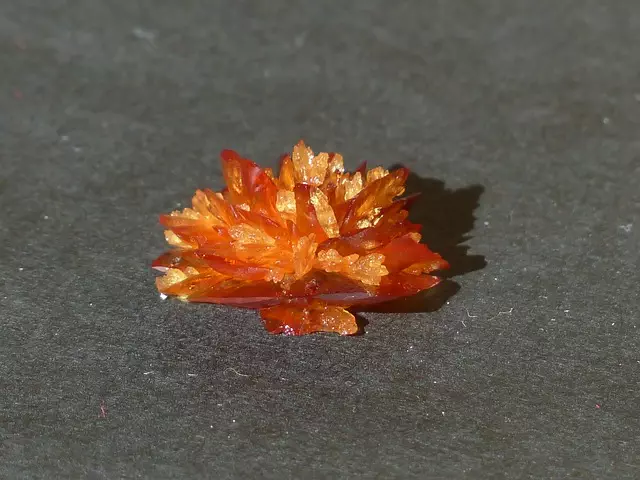Alpha Hydroxy Acids (AHAs) like glycolic and lactic acid peels are top skincare treatments in Toledo, offering significant anti-aging and acne-clearing benefits. Glycolic acid's deep penetration targets fine lines and scars, while lactic acid provides gentler exfoliation and hydration for sensitive skin. Both are popular 'Best Chemical Peels Toledo' options; choosing the right AHA based on skin type and concerns is crucial, with proper aftercare to minimize sensitivities.
“Unveil your skin’s radiant potential with an Alpha Hydroxy Acid (AHA) peel—a revolutionary treatment in skincare. This comprehensive guide explores the transformative power of AHAs, delving into their chemical compositions and diverse effects. We shine a spotlight on glycolic and lactic acid peels, highlighting their unique benefits.
For those seeking the best chemical peels in Toledo, this article offers valuable insights. From understanding your skin’s needs to choosing the right AHA peel, discover how these treatments can enhance your complexion. Uncover the secrets to achieving flawless, rejuvenated skin.”
- Understanding Alpha Hydroxy Acids (AHAs): An Overview
- Types of AHA Peels: Glycolic and Lactic Acid Focus
- Benefits and Considerations for Chemical Peels in Toledo
- Choosing the Best AHA Peel: Factors to Guide Your Decision
Understanding Alpha Hydroxy Acids (AHAs): An Overview
Alpha Hydroxy Acids (AHAs) are a group of chemical compounds known for their ability to exfoliate and rejuvenate the skin, making them a popular choice in dermatological treatments, including the best chemical peels Toledo has to offer. AHAs work by gently dissolving the glue-like substance (called intercellular cement) that holds dead skin cells together, allowing for their removal and promoting cell turnover. This process not only reveals smoother, brighter skin but also helps to unclog pores, reduce fine lines, and enhance product absorption.
Among the most commonly used AHAs in skincare are glycolic acid peel and lactic acid peel. Glycolic acid, a by-product of sugar fermentation, is renowned for its ability to penetrate deep into the skin due to its smaller molecular size. This makes it highly effective for treating acne scars, hyperpigmentation, and uneven skin tone. Lactic acid, on the other hand, derived from milk, tends to be larger but offers deeper hydration and is particularly beneficial for dry or sensitive skin types. Both are popular choices in skincare routines, catering to a wide range of skin concerns, from anti-aging to acne treatment.
Types of AHA Peels: Glycolic and Lactic Acid Focus
When it comes to alpha hydroxy acid (AHA) peels, two standout options are glycolic and lactic acid. Both are powerful exfoliants that work by breaking down the bonds between dead skin cells, allowing for deeper cleansing and rejuvenation. Glycolic acid peel is often considered the gold standard among chemical peels due to its smaller molecular size, enabling it to penetrate deeper into the skin. This makes it particularly effective for removing fine lines, wrinkles, and uneven skin texture.
On the other hand, lactic acid peel offers a gentler yet still potent exfoliating experience. Lactic acid is known for its hydrating properties, making it ideal for those with dry or sensitive skin. It helps to smoothen out rough patches, even out skin tone, and boost collagen production over time. Many dermatologists recommend lactic acid peels as an excellent alternative to glycolic for individuals seeking a more mild yet still effective treatment. Whether you opt for a best chemical peel in Toledo using glycolic or lactic acid, both can deliver remarkable results when performed by a qualified professional.
Benefits and Considerations for Chemical Peels in Toledo
Chemical peels, especially Alpha Hydroxy Acids (AHAs) like glycolic and lactic acid, offer a range of skin-rejuvenating benefits for residents of Toledo. These treatments are popular for their ability to improve skin texture, reduce fine lines and wrinkles, and treat conditions such as acne scarring and hyperpigmentation. Both glycolic acid peels and lactic acid peels are considered among the best chemical peel options in Toledo due to their effectiveness and relatively mild nature compared to other stronger acids.
When considering a chemical peel, it’s crucial to consult with a licensed dermatologist who can recommend the most suitable AHA for your skin type and concerns. While AHAs generally have minimal side effects, they may cause temporary redness or peeling. Proper aftercare is essential to ensure optimal results and prevent potential skin sensitivities. The right peel can transform your skin, leaving it smoother, brighter, and more youthful-looking—a true testament to the benefits of these advanced skincare treatments in Toledo.
Choosing the Best AHA Peel: Factors to Guide Your Decision
When considering an Alpha Hydroxy Acid (AHA) peel, several factors come into play to ensure you choose the best option for your skin. The first step is understanding that AHAs work by exfoliating the top layer of skin, removing dead cells and revealing smoother, brighter skin underneath. Among the popular choices, glycolic acid peels are known for their ability to penetrate deeper into the skin due to its smaller molecular size, making it effective for treating acne scars and fine lines. Lactic acid peels, on the other hand, are gentler and more hydrating, ideal for sensitive skin or those looking for a less intense but still beneficial peel.
Other considerations include the concentration of the AHA, your skin type, and specific concerns you want to address. Higher concentrations offer more significant results but may increase the risk of irritation. Oily or acne-prone skin might benefit from a glycolic acid peel with a slightly higher concentration, while dry or mature skin could respond better to a lactic acid peel with a lower concentration. Consulting a dermatologist or skincare professional in Toledo can provide personalized guidance and help you select the best AHA peel for your needs, ensuring optimal results and minimizing potential side effects.


